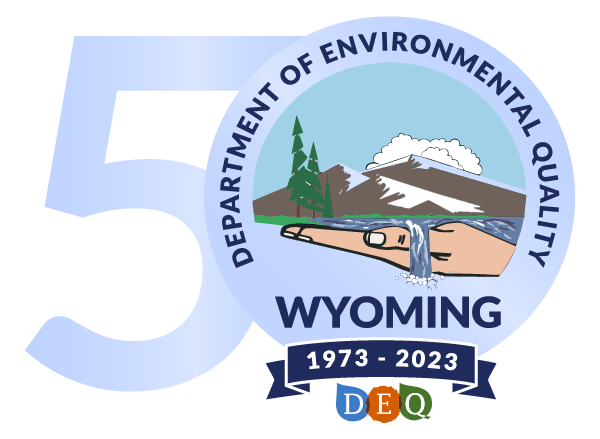By Kimberly Mazza
It’s so easy to throw trash away – a cereal box, expired food from the fridge, junk mail, a used Kleenex, a broken jar, etc. etc. etc. Just open the trash can lid and in it goes. But what happens after the trash can? Read more to find out what the DEQ and those that work at landfills are doing to manage Wyoming’s trash.
Trash happens as a direct result of everyday living, and it’s the full-time job for the six members of DEQ’s Solid Waste Permitting and Corrective Action Program (SWPCA) to ensure that Wyoming’s waste is safely disposed.
Jody Weikart is DEQ’s SWPCA Manager. She says the SWPCA team works closely with over 200 permitted solid waste facilities in Wyoming. “We get calls from the public every day asking how to dispose of something; or from a permitted solid waste facility asking if they are permitted to accept a specific waste or how to manage a particular waste stream. The SWPCA exists to help Wyoming communities and businesses manage their trash in a way that’s protective of human health and the environment.”
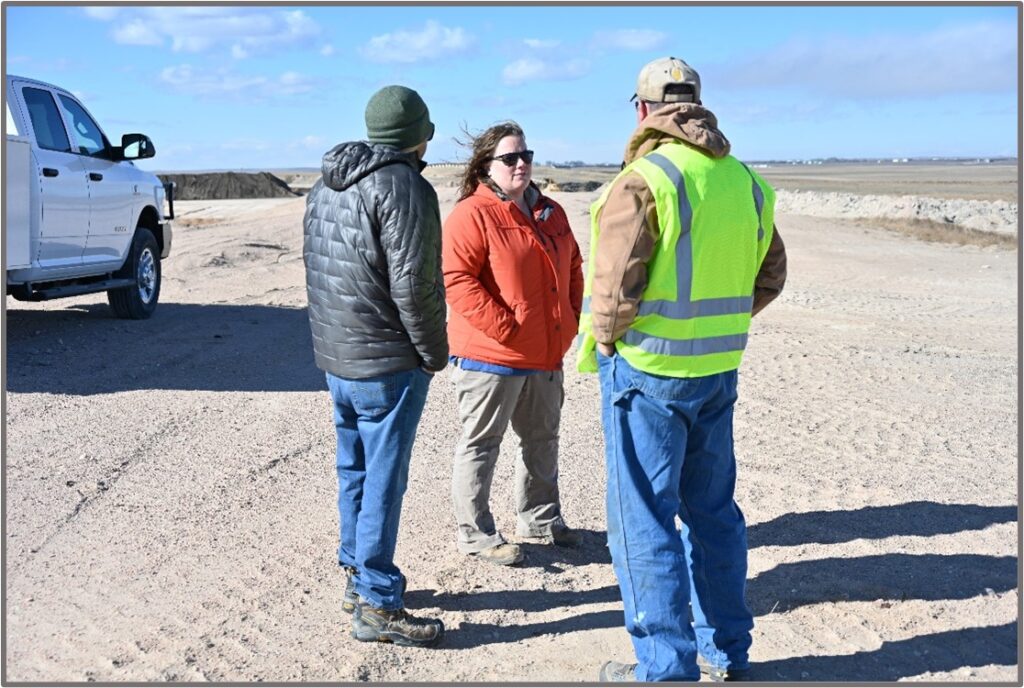
Jody and Tim (left) talk with a Landfill Superintendent.
Throwing items in the trash takes little to no thought from the consumer side; however, a great deal of thought goes into planning, designing, and running an efficient municipal solid waste landfill. Modern landfills today, where every cubic yard of space equals money, require that they be well engineered and judiciously managed. They must meet state and federal regulations to ensure the least amount of impact to communities and the environment.
The very first step is a site suitability study.
“Each landfill is designed with the thought in mind to protect the environment from groundwater impacts and to meet the needs of the community,” notes Weikart. “The location of a proposed landfill must be evaluated relative to distance to drinking water wells, houses, schools, seismic faults, airports, floodplains, endangered species, and wetlands. We also look at the historical and archeological value, groundwater, geology, and access issues.”
After a site is approved, engineers and geologists begin the design phase for the landfill that will go into the facility permit. “The days of simply digging a hole to dump in are behind us,” says Weikart.
Modern municipal solid waste landfills, such as the Casper Regional Landfill, are now required to have liners to capture leachate which is then directed into leachate collection systems for treatment. To ensure the integrity of the liner system, groundwater monitoring networks are installed around the landfill to identify any leaks and to alert the facility of an issue.
“The last municipal solid waste landfill we permitted took 19 months. That included going from site selection to the permit being issued. The permitting process in that window was eight months. During that time, there was constant communication between SWPCA and the landfill’s design team,” Weikart adds. “Additionally, the permitting process offers several opportunities for the public to review and comment on the project. The Department’s goal is to make this an extremely transparent and collaborative process for all parties involved.”
Once the facility has an approved permit, the next phase is construction.
Essentially, a disposal cell is excavated per the permitted design and the bottom of the cell is prepared for a liner. A new landfill liner system typically consists of three layers, compacted clay, geomembrane liner, and drainage layer(s). The compacted clay layer provides a smooth surface for the geomembrane liner as well as a second line of defense in the event of a tear or failure of the geomembrane liner. The geomembrane liner prevents leachate from escaping the cell and into groundwater, while the drainage layer allows the leachate to be directed to a collection sump so it can be safely managed. The liner system is then covered with a protective layer of soil to safeguard against damage to the liner or leachate collection system during disposal activities.
Cool fact – Disposal cells are big, and their liners have seams. The liner materials, known as sections, are bonded together by fusion welding and tested for strength and impermeability prior to being put in use.
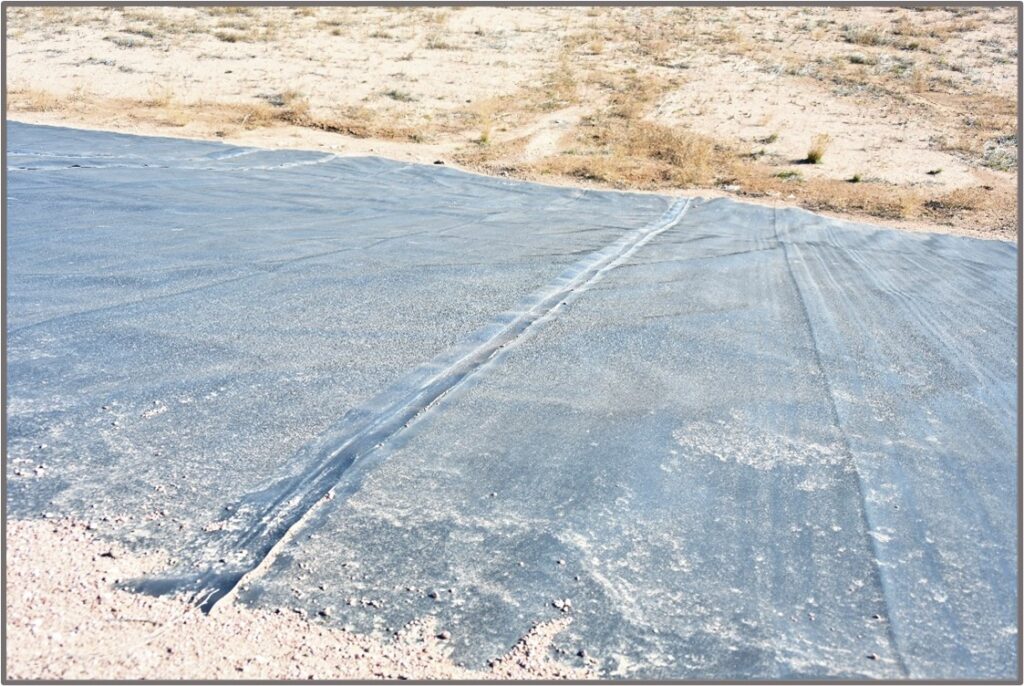
Liner with bonded sections
Leachate is a by-product of landfills, derived from the decomposition of trash and carried along by rainwater which percolates downward through the waste towards groundwater during the operational lifespan of a landfill. A perforated pipe called a leachate collection pipe is installed in the base of a cell to collect and pump leachate to holding ponds or tanks for treatment.
Timothy Reed is DEQ’s SWPCA District 1 Supervisor and says disposal cells will vary in size, usually based on the population and area being served by the facility. Cells are designed to accept as much waste as possible because air space equals revenue. “This vertical distance is more important than a landfill’s horizontal distance,” notes Reed. Every landfill acre adds cost to lining and eventually capping. By going deep and high, the lining cost is minimized due to the increased amount of waste that can be placed on that liner.” For that reason, landfills are constantly working to optimize their air space through enhanced compaction and alternative daily cover options, such as tarps.
Reed states that “Eastern Laramie County Solid Waste Disposal District Landfill spent two months constructing a three-acre lined cell.”
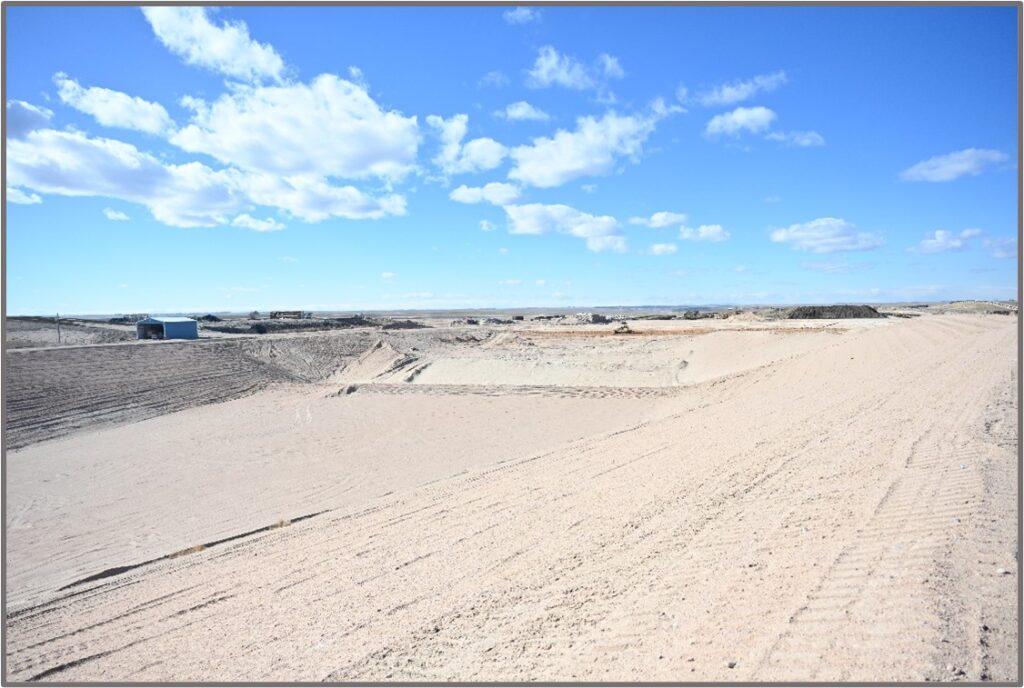
Cells can take many months to construct.
Cool fact – Over the course of a landfill’s life, several disposal cells will be constructed, usually in a side-by-side sequence that allows for additional layers of waste to be placed vertically over the original cells to achieve a loaf like formation prior to a final cap being installed. This vertical waste placement allows for the maximization of waste over the base liner system which reduces overall disposal costs.
When the construction of a disposal cell is complete, the last step before it can accept waste is for it to be certified by a Professional Engineer and approved by the DEQ.
Once operational, the active area of the cell accepting waste is known as the working face. This area is kept as small as possible to minimize the potential amount of windblown litter prior to compaction by specialized equipment. At the end of each day, regulations require this “active” area to be covered with six inches of dirt known as “daily cover.” This daily cover acts to further minimize litter and fire issues in addition to discouraging vectors such as birds or flies, while reducing water infiltration and addressing odors.
Many landfills embrace activities like recycling, diversion, and food and green waste composting prolong the life of a cell while reducing the amount of waste that contains secondary value from being lost to disposal.
Who knew there was so much involved in managing good old trash? The SWPCA staff at the DEQ does and so do those that work in Wyoming’s landfills. “People don’t usually understand why I enjoy talking trash so much but given the complexity of what landfill operators and managers do day in and day out to provide solid waste services to the citizens of Wyoming, our team’s role in assisting them and communities becomes extremely rewarding,” concludes Weikart.
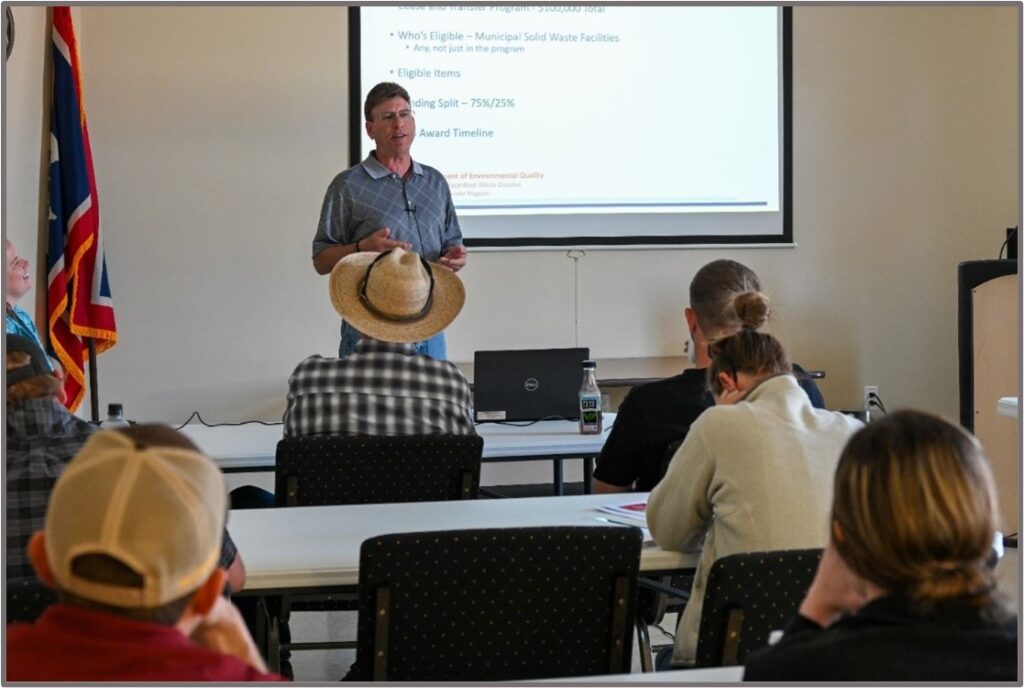
SWPCA Conducting a Training
The SWPCA offers numerous trainings throughout the year to help Wyoming’s solid waste community and the public have a better understanding of the solid waste regulations. Topics cover everything from composting to financial assurance.
One of the training opportunities offered is the MSW landfill operator & manager training course. Up until 2023, the operator & manager training course was only offered in person, once a year, at the Wyoming Solid Waste and Recycling Association (WSWRA) Annual Conference. Based on requests from the solid waste community, the SWPCA began offering the course, both in person and virtually, throughout the year. “If the solid waste community asks us for support, we do our best to meet their needs” says Weikart.
Cool Note: The Wyoming DEQ Solid and Hazardous Waste Division offers free training to support the solid waste industry in Wyoming. Below are trainings that will be offered to the solid waste community in 2023.
- August 2023 – Municipal Solid Waste Landfill Operator and Manager Exam
- This session will be in-person only and will be held during the Annual WSWRA Conference
- Registration conducted through WSWRA
- September 27, 2023 – MSW Annual Report, Click Here to Register
- November 2023 – State Guarantee Trust Account Informational Webinar
Registration will open 45 days in advance of each training session and an agenda will be provided at that
time. To stay up to date on these trainings and all things solid waste, please sign up for the DEQ Solid
Waste Listserv at https://public.govdelivery.com/accounts/WYDEQ/subscriber/new.
Thank you to DEQ Jody Weikart, Craig McOmie, and Timothy Reed who contributed extensively to this article.
